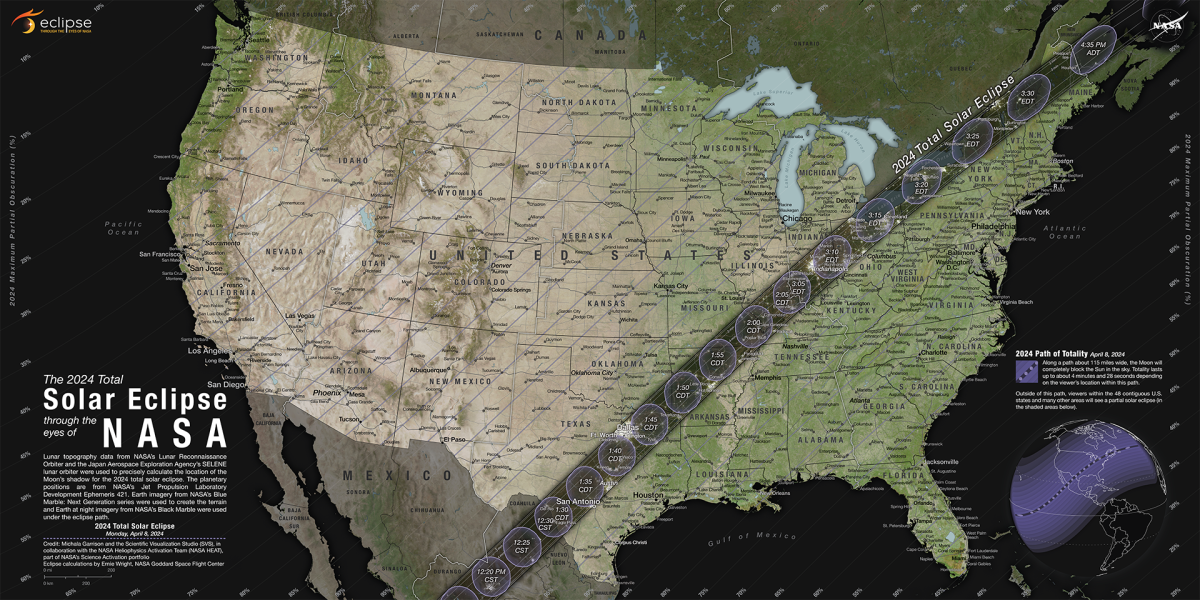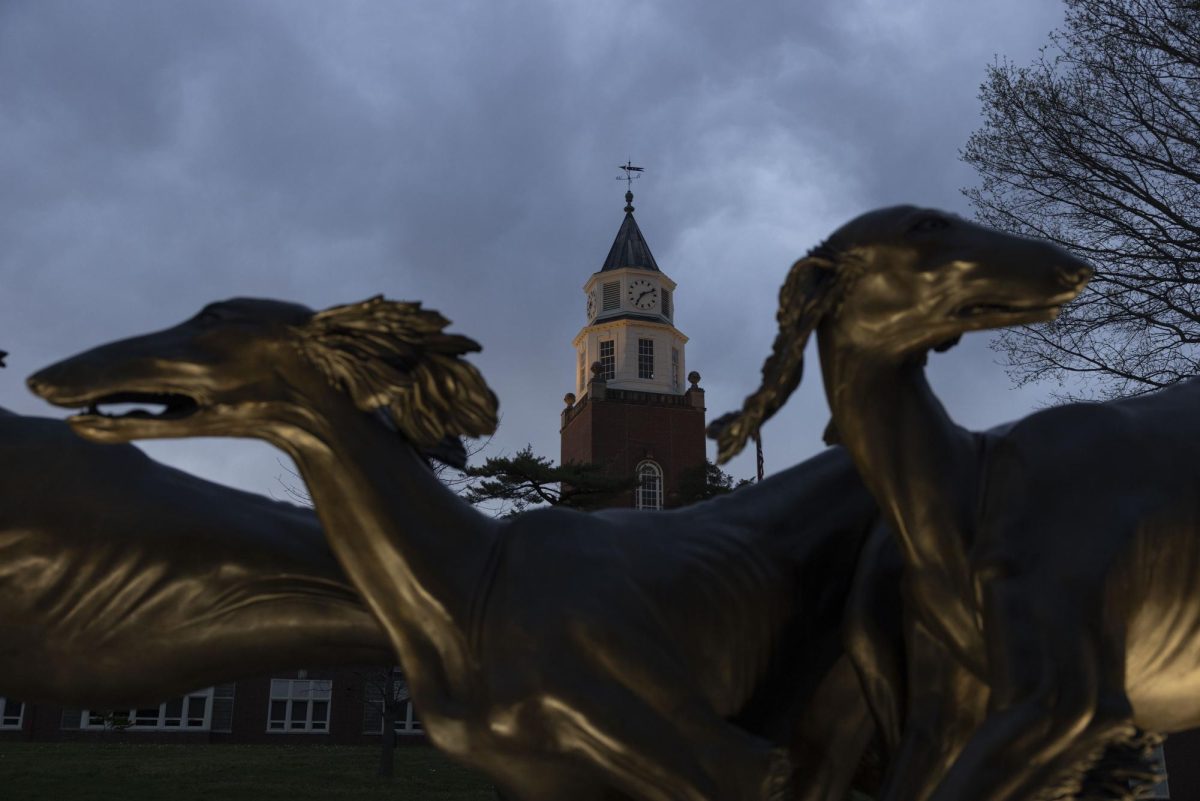Areas in Mexico, the United States and Canada observed with wonder as the solar eclipse happened Monday sweeping north and east across the continent.
The eclipse was first sighted in Mexico around 11:07 a.m. PDT and entered Texas at 1:27 p.m. CDT. It then traversed the U.S. before exiting through Maine around 3 p.m. EDT, proceeding into Canada.
Advertisement
The last solar eclipse in the U.S. occurred in 2017. NASA reported variations in the path and timing of the 2024 eclipse that differed than that of 2017.
The path of totality was broader this time due to the moon’s closer proximity to Earth. It covered more cities than its 2017 counterpart, allowing more people to witness totality.
NASA estimates 31.6 million people reside in this year’s path of totality, compared to 12 million for the 2017 eclipse.
Advertisement*
In 2017, Carbondale experienced the longest period of totality at 2 minutes and 42 seconds. This year, totality lasted up to 4 minutes and 28 seconds near Torreon, Mexico, and approximately 4 minutes and 26 seconds at the center of its path over the U.S.
Cities with optimal viewing opportunities included Dallas, Little Rock, Indianapolis, and Buffalo.
State police nationwide monitored roads, waterways, and airspace to manage potential congestion, ensuring smooth operations.
Investigators in Lorain County, Ohio, noted less traffic than expected and no major trouble. The Dallas Morning News and other nationwide news sources also report that they have avoided anticipated traffic concerns.
The Dallas Morning News reported travelers from France, Oklahoma, Florida, and New York stopping into the area to view the eclipse from some of their popular central district hotspots. The last time Dallas experienced totality was in 1878 and will not experience it again for another 300 years.
Other areas in Texas were able to view the eclipse as well, given that the moon was closer to the Earth this time.
“We were home. The animals went quiet, and the temperature got cooler,” a person from Hewitt, Texas said.
In Russellville, Arkansas, 300 couples gathered in a field for an ‘Elope at the Eclipse’ wedding event, earning the moniker “total eclipse of the heart” from The New York Post.
Russellville was ranked by NASA as one of the best places to view the eclipse, with totality lasting approximately 4 minutes.
In Indiana, thousands convened at the Indianapolis Motor Speedway for a Total Solar Eclipse event hosted by Purdue University. The event drew attendees from across the U.S. and beyond, with hotel rooms in the area reaching $1,300.
Guest speakers at the IMS event included astronauts, NTT IndyCar Series drivers, and astronomy experts.
Cloud coverage in Buffalo, New York, hindered eclipse sightings, though occasional breaks allowed glimpses.
Maine experienced favorable weather for the eclipse, attracting additional travelers rerouted from Texas due to weather forecasts.
Houlton, Maine, witnessed the last moment of totality in the U.S., spanning 3 minutes and 18 seconds.
Large crowds gathered and were greeted by a three-day festival that included community meals, ensuring there would be food to feed the traveling spectators that entered the community. The turnout was successful, and organizers were pleased after spending more than 2 years in planning.
Although visible from numerous locations, those who missed the event can view live feeds and posts on various social media platforms.The videos and photos show the crowds buzzing with anticipation and delight whether it was their first time witnessing a solar eclipse or not.
The next U.S. solar eclipse is slated for August 22, 2044, with totality over North Dakota, Montana, and northern Canada. A coast-to-coast eclipse will span the lower 48 states on August 12th, 2045
Advertisement



















